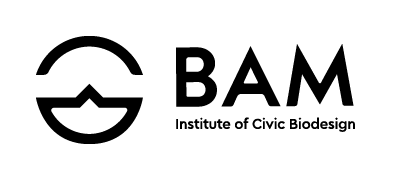
What does a module look like?
During their time with the Institute, each student will complete 12 modules composed of competencies. Those modules are based off the 12 Principles of Permaculture, which is as follows:
Observe and Interact: By taking time to engage with nature we can design solutions that suit our particular situation.
Catch and Store Energy: By developing systems that collect resources at peak abundance, we can use them in times of need.
Obtain a Yield: Ensure that you are getting truly useful rewards as part of the work that you are doing.
Apply Self-regulation and Accept Feedback: We need to discourage inappropriate activity to ensure that systems can continue to function well.
Use and Value Renewable Resources and Services: Make the best use of nature's abundance to reduce our consumptive behavior and dependence on non-renewable resources.
Produce No Waste: By valuing and making use of all the resources that are available to us, nothing goes to waste.
Designing from Patterns to Details: By stepping back, we can observe patterns in nature and society. These can form the backbone of our designs, with the details filled in as we go.
Integrate Rather than Segregate: By putting the right things in the right place, relationships develop between those things and they work together to support each other.
Use Small and Slow Solutions: Small and slow systems are easier to maintain than big ones, making better use of local resources and producing more sustainable outcomes.
Use and Value Diversity: Diversity reduces vulnerability to a variety of threats and takes advantage of the unique nature of the environment in which it resides.
Use Edges and Value the Marginal: The interface between things is where the most interesting events take place. These are often the most valuable, diverse and productive elements in the system.
Creatively Use and Respond to Change: We can have a positive impact on inevitable change by carefully observing, and then intervening at the right time.
So, what does a module look like? Below is a module breakdown for Catching and Storing Energy:
Catching and Storing Energy
Permaculture Value 2: Catch and store energy.
By developing systems that collect resources at peak abundance, we can use them in times of need.
Module Description
Catching and Storing Energy invites the student to study the second permaculture value by engaging it experientially. The student will undertake a long duration project in resource capture and storage. Core competencies in systems, collection and usage will be demonstrated by the student en route to solving a real world problem.
Project
Project: Build and pilot a model that stores and deploys a resource in a seasonally optimal way. Analyze the results of the pilot and challenges to its future development.
Character tags: #resilience/#antifragility, #critical thinking, #thrift, #curiosity, #patience
Tools: #research, #innovation, #statistics, #finance
Core Competencies
Demonstration of proficiency in the following core competencies is recommended on the way to the project. Each core competency has stand-alone value, and completion of each one merits a badge. All, however, must be demonstrated at a level of proficiency for course credit.
2.1 Catch and Store Systems
2.1.1 Understands philosophy of systems at the intermediate level. ⚒
2.1.2 Analyzes the dominant system used for {subindustry}, including its inner structure, history and limitations. 🎓
2.1.3 Identifies alternatives to the dominant system, predicting each system’s potential and limitations. ⚒
2.2 Resource Collection
2.2.1 Diagrams existing collection technologies and methods for {resource}. 🎓
2.2.2 Identify maximal collection periods for {resource} within the {subindustry} cycle. ⚒
2.2.3 Identify and analyze existing technology for the storing of {resource}. 🖧
2.3 Use in Times of Need
2.3.1 Argues the ethics of sustainability between reduction and seasonal reallocation, with discussion of {resource} as the main exhibit. 🎓
2.3.2 Compares capture and use of {resource} in {subindustry} to a different resource in a different industry.🖧
2.3.3 Exhibits the integration of diligence, patience, and thrift in their own life. 🖧
